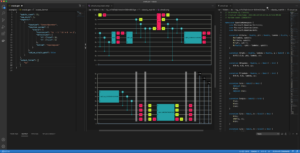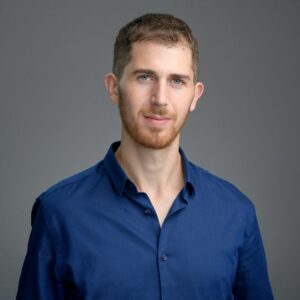
Helping organization create quantum circuits that were practically impossible to design otherwise
Even if hardware advances can create quantum computers with hundreds, thousands, or even millions of qubits, the complexity of circuit design for those computers may mean that quantum advantage will remain a distant dream. Tel-Aviv-based Classiq is working to change that.
The Classiq approach, called “Quantum Algorithm Design,” automatically synthesizes optimized quantum circuits from high-level functional models. The solution was born from the founders’ desire to solve problems that are limiting progress in quantum, explained Nir Minerbi, Classiq co-founder and CEO.
“When we explored the quantum industry to identify its main bottlenecks, it became clear that software is a big challenge,” said Minerbi. “We trust the tech giants to deliver more powerful hardware, but currently, the quantum software stack is in its infancy. Developing quantum software is almost an impossible task”
Minerbi estimates that only a few thousand people in the world can design a 10-qubit quantum circuit. That number falls to a few hundred experts who can design a 50-qubit circuit.

“But how about designing 100-, 500- or 10,000-qubit quantum circuits? That’s a very complex challenge with existing tools. So, that became Classiq’s vision: to solve this problem and to enable the software to scale alongside the hardware.”
“And it becomes increasingly unlikely that anyone can develop circuits beyond 50 qubits,” said Minerbi. “But how about designing 100-, 500- or 10,000-qubit quantum circuits? That’s a very complex challenge with existing tools. So, that became Classiq’s vision: to solve this problem and to enable the software to scale alongside the hardware.”

According to Minerbi, solving the design complexity problem does more than just make quantum computers more practical — it makes them more accessible. With Classiq, organizations can combine the power of elite quantum scientists with domain-specific experts as well as other individuals within their enterprises. These integrated teams can engineer solutions to the world’s most pressing problems.
“We want to enable the quantum experts to do the high-level design, but, in parallel, enable domain experts who are not quantum specialists to participate in and contribute to the quantum algorithm design process.”
“We want to enable the quantum experts to do the high-level design, but, in parallel, enable domain experts who are not quantum specialists to participate in and contribute to the quantum algorithm design process,” said Minerbi. “That’s what some of our customers are doing today. We see more and more teams with between one and ten quantum information Ph.D.’s alongside people from other business units who are not quantum experts.”
Not a New Problem
There’s an analog to this approach in classical electronic circuit design, Minerbi explained.
“If you want to design a simple electronic chip with storage, a simple printed circuit with a few dozens of classical gates — like AND gates and NOT gates — that’s a complex design problem, but you can still do it manually,” said Minerbi. “However, you can’t design circuits with millions or billions of transistors in the same way. Luckily, you don’t need to because, in the classical electronic design process, there are high-level modeling languages like VHDL and Verilog that define what functionality you want to achieve out of the circuit without requiring you to define the implementation.”
Then, there are software platforms like Cadence or Synopsis that read these high-level models and synthesize a circuit that meets your demands and constraints. These platforms allow the users to define what functionality they want to achieve without requiring them to define all the details about the implementation.
In Classiq’s quantum version, the implementation of this gate-level circuit is automated by the company’s software. The software acts like “VHDL for Quantum,” injecting a high-level functional model and turning it into a gate-level quantum design. According to the company, this ultimately puts the power of quantum computers in the hands of more people, who can then use their creativity and knowledge to enable quantum solutions for a wide variety of industries and use cases.
To allow creating solutions using today’s NISQ-era computers, Classiq also makes it easy to create hybrid solutions that combine quantum computing with classical processing.
Satisfying the designer’s requirements and constraints
The Classiq platform gets inputs from a high-level functional model and the constraints the designer needs to meet. It uses a constraint satisfaction engine to fulfill the requirements while meeting the constraints.
Minerbi explained: “The constraint satisfaction engine knows two things: First, what functionality you want to achieve and, second, what hardware constraints you need to consider: number of qubits, depth of circuit, etc. So, you get two things: a synthesis of a quantum circuit from a high-level model, and an excellent optimization because the model knows the hardware constraints as well as the high-level requirements.”
Functionality and Integration
Many users worry that each quantum company that comes along will require a steep learning curve, with more technological integration and additional languages to learn.
That’s not an issue when users choose Classiq.
Classiq’s platform is designed to match the client’s quantum stack. The platform sits on top of popular programming languages such as Cirq, Qiskit, Braket and Q#. It works seamlessly with all quantum programming languages and with any universal gate-based quantum computer.
Customer, Investor Interest
Classiq continues to garner attention from customers and investors alike.
Enterprise quantum teams that are interested in developing applications or algorithms for quantum computers are choosing Classiq. The company is also developing ties with academia. Additionally, it has deep partnerships with the leading hardware providers.
Since its inception in late 2019, the company secured a total of about 18 million in funding from leaders in venture capital, including Team8 and Wing Venture Capital, Entrée Capital, OurCrowd, and IN Venture, the corporate venture arm of Sumitomo Corp.
For more market insights, check out our latest quantum computing news here.


















